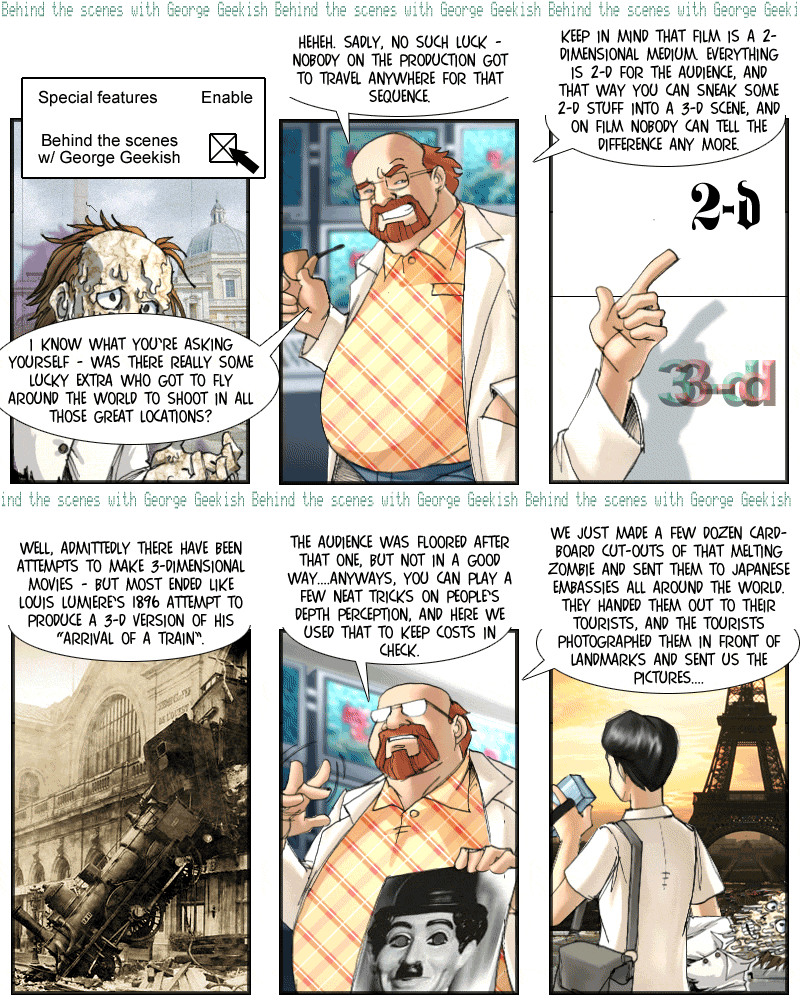

This is what George is best at – finding a simple and cheap solution to a complex problem. Rather than send a team all across the globe to shoot short vignettes in exotic places (or shooting in the studio in front of a photographic backdrop, which would just be artless), he simply draws on the ready and willing army of camera-equipped Japanese tourists to get the footage he needs – which is doubly effective, since they tend to have better cameras than Nolan Nobucks Productions, anyway. And it works much better than it did in the past, thanks to the Internet – George had tried the same trick in the early eighties, but faxing a picture for the cutout resulted in slightly impaired picture quality (it wasn’t for a high-quality picture, anyway).
As far as panel four is concerned – many people have heard how Louis Lumiere’s 1896 movie “Arrival of a Train” sent the audience fleeing in terror during the premiere at the seeming approach of a locomotive. Less well known is the tragic aftermath – a few months later, Lumiere started to experiment with 3-d cinema. This time, the audience did not flee, tragically expecting the locomotive to be as fake as the first time… well, most new techonolgy doesn’t work perfectly on its first outing. By the 1950ies, fatalities during 3-d movies had become somewhat rare.
The hollow mask illusion, which George demonstrates in panel five, has recently been in the news, by the way.
More on Monday.